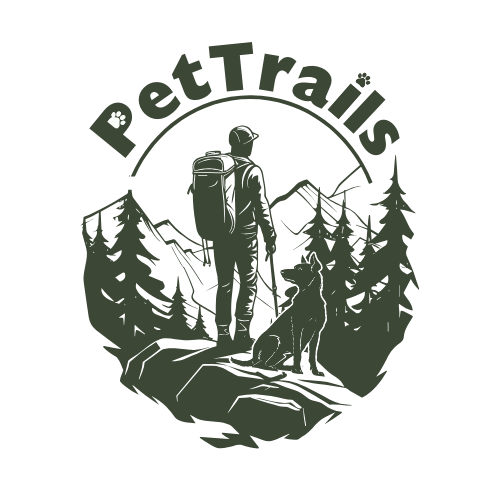
Post-Hike Recovery: The First 2 Hours That Make or Break Your Dog's Experience
Share
The hike is over, but your responsibilities as a dog owner aren’t. What happens in the first two hours after a hike can determine whether your dog bounces back strong or develops preventable health issues like dehydration, paw injuries, or heat stroke.
This two-hour window is critical for recovery where proper care can reduce the risk of long-term injury, speed up healing, and ensure your dog stays healthy and ready for future trails. This guide breaks down what’s happening in your dog’s body post-hike and provides a practical, step-by-step recovery protocol you can follow every time.
What’s Going on Inside Your Dog After a Hike
After a strenuous hike, your dog’s body is under physiological stress. Heart rate and body temperature remain elevated, muscles are filled with metabolic waste, and the shift from "fight or flight" to "rest and digest" mode has not yet begun. Without proper cooldown care, this transition can be delayed, leading to fatigue, soreness, or more serious issues.
Typical post-hike vitals:
- Core temperature: 103–104°F (normal is 101–102.5°F)
- Elevated heart rate and respiration
- Muscle fatigue and dehydration
The first two hours are when recovery systems kick in. Blood flow must return from working muscles to internal organs for repair. Your role is to make that transition safe and effective.
The 4-Phase Post-Hike Recovery Protocol
Phase 1: Immediate Transition (0–15 Minutes)
Slow down gradually. Let your dog walk at a slow pace for the last 10 to 15 minutes of the hike. This prevents blood pooling in the limbs and helps the cardiovascular system return to a resting state safely.
Check their condition during this walk.
- Normal signs: moderate panting, mild fatigue, seeking shade, slightly elevated heart rate that improves within 15 minutes.
- Concerning signs: heavy or persistent panting, bright red or pale gums, vomiting, confusion, collapse, or body temperature above 104°F.
Begin cooling if needed. Move your dog to shade and apply cool (not cold) water to their head, neck, chest, and belly. Avoid ice water, which can constrict blood vessels and slow heat dissipation.
Phase 2: Assessment and Cleaning (15–45 Minutes)
Perform a full-body check.
- Paws and pads: Spread the toes to check for thorns, pebbles, or cuts. Examine pads for cracks, heat, or swelling. Look at nails for splits or damage.
- Coat and skin: Run your hands through the coat to find ticks, burrs, cuts, or tender areas. Check inside ears, under the belly, and around the neck.
- Eyes and mouth: Look for irritation, redness, or signs they drank from unsafe water sources.
Clean as needed. Rinse paws with clean water and dry between toes. Remove debris from fur. If pads are dry or cracked, apply a pet-safe paw balm.
Phase 3: Controlled Rehydration and Monitoring (45–90 Minutes)
Hydration strategy matters. Do not allow your dog to gulp water immediately after exercise. This increases the risk of bloat, a potentially fatal condition.
- Wait 20 to 30 minutes before offering water
- Provide small amounts every 5 to 10 minutes
- Use cool or room temperature water
How much to offer: About 1 ounce of water per pound of body weight throughout the day, starting with small sips post-hike.
Check these vital signs during recovery:
- Gum color: Gums should be moist and light pink. Pale or bright red gums can indicate poor circulation or overheating.
- Capillary refill time: Press your thumb gently against your dog’s gum until it turns white, then release. The color should return within 2 seconds. This checks blood circulation.
- Skin elasticity test: Gently pinch the skin between your dog’s shoulder blades, then release. It should snap back quickly. Slow return indicates dehydration.
-
Breathing pattern: Breathing should slow steadily. Rapid or labored breathing after 30–45 minutes may signal overheating or respiratory strain.
Phase 4: Rest and Nutrition (90–120 Minutes)
Delay feeding. Wait at least 30 minutes to 1 hour before feeding your dog. This reduces the risk of bloat and allows body temperature and heart rate to normalize.
Start with a half-portion of their regular meal. Offer the rest after 30 minutes if they show no signs of discomfort.
Provide a calm environment. Create a quiet space where your dog can rest without stimulation. Let them choose their preferred resting position. A cooling mat or orthopedic bed can aid muscle recovery.
Optional light massage: Gently stroke along the shoulders, legs, and back to improve circulation and ease stiffness. Avoid deep tissue work immediately after exercise.
When to Call the Vet Immediately
Some symptoms require urgent veterinary care. Contact your vet if your dog shows any of the following:
- Body temperature above 104°F that does not decrease
- Bright red or pale gums, vomiting, diarrhea, collapse, or disorientation
- Limping that prevents bearing weight or visible wounds
- Weak pulse, irregular heartbeat, or gums that remain white or blue after pressing
- Always begin cooling before transport in suspected heat stroke cases.
Prepare Your Post-Hike Care Kit
Include the following essentials in your hiking pack:
- Clean water (for drinking and rinsing)
- Collapsible bowl
- Towels and wet wipes
- Dog-safe paw balm
- Tweezers or tick remover
- Flashlight for inspection
- Digital thermometer
- Basic pet first aid supplies
Add protective booties for rough terrain and instant cold packs for injury response.
Final Thoughts
The first two hours after your hike are a great opportunity to protect your dog’s health. Dogs that receive structured recovery care have fewer injuries, better stamina, and a longer trail life.
Whether your dog is a weekend trail explorer or a regular backcountry companion, applying this post-hike protocol consistently can make a lasting difference in their well-being and performance.
